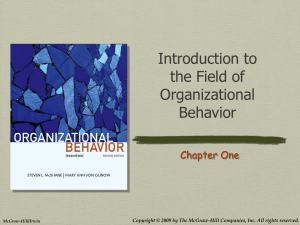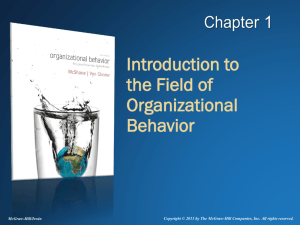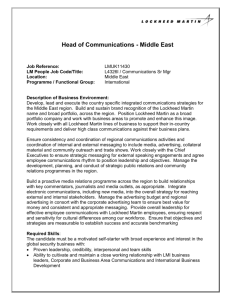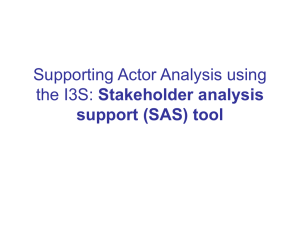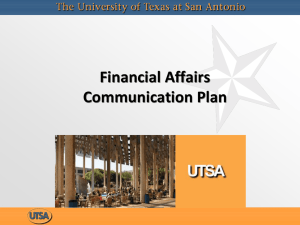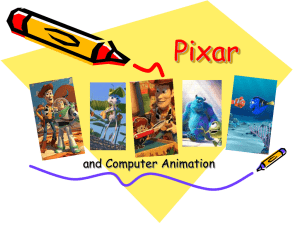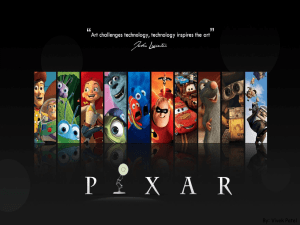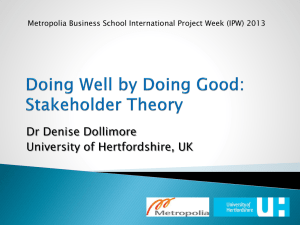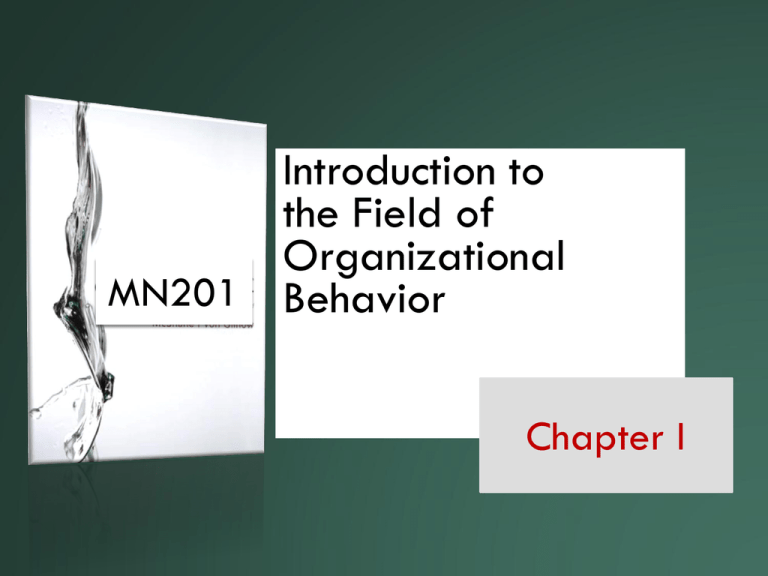
Introduction to
the Field of
Organizational
MN201 Behavior
Chapter I
Pixar Animation Studios
OB practices have helped Pixar
Animation Studios to become the
world’s most successful animation
studio
Employee competencies
People-centered
Teamwork and org learning
Constructive conflict
John Lassiter
Chief Creative Officer
of Pixar and Disney
1-2
Organizational Behavior and
Organizations
Organizational behavior
The study of what people think,
feel, and do in and around
organizations
Organizations
Groups of people who work
interdependently toward some
purpose
John Lassiter
Chief Creative Officer
of Pixar and Disney
1-3
Why Study OB?
Understand and predict the need and to satisfy the
need
Influence behavior – get things done
OB improves an organization’s financial health
OB is for everyone
1-4
Four Perspectives of Organizational
Effectiveness
Open Systems Perspective
Organizational Learning Perspective
High-Performance WP Perspective
Stakeholder Perspective
NOTE: Need to consider all four perspectives when
assessing a company’s effectiveness
1-5
Open Systems Perspective
Organizations are complex systems that “live”
within (and depend upon) the external
environment
Effective organizations
Maintain
a close “fit” with changing conditions
Transform inputs to outputs efficiently and
flexibly
Open systems perspective lays the
foundation for the other three perspectives
or organizational effectiveness
1-6
Open Systems Perspective
Environment
Feedback
Feedback
Feedback
Feedback
1-7
Organizational Learning Perspective
An organization’s capacity to acquire, share,
use, and store valuable knowledge
Need to consider both stock and flow of
knowledge
Stock:
intellectual capital
Flow: org learning processes of acquisition,
sharing, and use
1-8
Intellectual Capital
Human
Capital
Knowledge that people possess and
generate
Structural Capital
Knowledge captured in systems and
structures
Relationship
Capital
Value derived from satisfied customers,
reliable suppliers, etc.
1-9
Organizational Learning Processes
KNOWLEDGE
ACQUISITION
Extracting information
and ideas from its
environment as well
as through insight
KNOWLEDGE
SHARING
KNOWLEDGE
USE
Distributing
knowledge
throughout the
organization
Applying knowledge
to organizational
processes in ways
that improves the
organization’s
effectiveness
Posting case
studies on intranet
Giving staff freedom
to try out ideas
Examples in practice
Hiring skilled staff
1-10
Organizational Memory
The storage and preservation of intellectual
capital
Retain intellectual capital by:
Keeping
knowledgeable employees
Transferring knowledge to others
Transferring human capital to structural capital
1-11
High Performance Work Practices
(HPWPs)
HPWPs are internal systems and structures that are
associated with successful companies
1. Employees are competitive advantage
2. Value of employees increased through specific
practices.
3. Maximum benefit when org practices are bundled
1-12
High Performance Work Practices
HPWPs include:
Employee
involvement and job autonomy (and
their combination as self-directed teams).
Employee
competence (training, selection, etc.).
Performance-based
rewards
1-13
Stakeholder Perspective
Stakeholders: any entity who affects or is
affected by the firm’s objectives and actions
Challenges with stakeholder perspective:
Stakeholders
have conflicting interests
Firms have limited resources
1-14
Stakeholder Perspective
Lockheed Martin is rated by
engineering students as an “ideal”
employer
Pays attention to its many
stakeholders
Relies on values and ethics to guide
decisions
Strong emphasis on corporate social
responsibility (e.g. photo shows
clean-up after hurricane Katrina)
Lockheed Martin
1-15
Stakeholders: Values and Ethics
Values and ethics prioritize
stakeholder interests
Values
Stable, evaluative beliefs, guide
preferences for outcomes or courses
of action in various situations
Ethics
Moral principles/values, determine
whether actions are right/wrong
and outcomes are good or bad
Lockheed Martin
1-16
Stakeholders and CSR
Stakeholder perspective includes
corporate social responsibility
(CSR)
Benefit society and environment
beyond the firm’s immediate
financial interests or legal
obligations
Organization’s contract with society
Triple bottom line
Economy, society, environment
Lockheed Martin
1-17
Types of Individual Behavior
Task Performance
Organizational
Citizenship
Goal-directed behaviors under
person’s control
Contextual performance – cooperation
and helpfulness beyond required job
duties
more
1-18
Types of Individual Behavior
(con’t)
Counterproductive
Work Behaviors
Voluntary behaviors that potentially
harm the organization
Joining/staying with
the Organization
Agreeing to employment relationship;
remaining in that relationship
Maintaining Work
Attendance
Attending work at required times
1-19
Globalization
Economic, social, and cultural connectivity with
people in other parts of the world
Effects of globalization on organizations
New
structures
Increasing diversity
Increasing competitive pressures, intensification
1-20
Increasing Workforce Diversity
Surface-level diversity
Deep-level diversity
Observable demographic and other overt differences in
people (e.g. race, ethnicity, gender, age)
Differences in psychological characteristics (e.g.
personalities, beliefs, values, and attitudes)
Example: Differences across age cohorts (e.g. Gen-Y)
Implications
Leveraging the diversity advantage
Also diversity challenges (e.g. teams, conflict)
Ethical imperative of diversity
1-21
Employment Relationships
Work/life balance
Minimizing conflict between work and nonwork demands
number one indicator of career success
Virtual work
Using information technology to perform one’s job away from
the traditional physical workplace
Telework – issues of replacing face time, clarifying
employment expectations
1-22
Organizational Behavior Anchors
Multidisciplinary anchor
Many OB concepts adopted from other disciplines
OB develops its own theories, but scans other fields
Systematic research anchor
OB researchers rely on scientific method
Should apply evidence-based management, but…
Bombarded with theories and models
Challenge translating general theories to specific situations
Swayed by consultant marketing
Perceptual biases -- ignoring evidence contrary to our beliefs
1-23
Organizational Behavior Anchors
Contingency anchor
(con’t)
A particular action may have different consequences in different
situations
Need to diagnose the situation and select best strategy under
those conditions
Multiple levels of analysis anchor
Individual, team, organizational level of analysis
OB topics usually relevant at all three levels of analysis
1-24
More About Organizations
25
An organization is a coordinated unit consisting of
at least two people who function to achieve a
common goal or sets of goals.
Entities that enable society to pursue
accomplishments that cannot be achieved by
individuals acting alone.
© 2010 The McGraw-Hill Companies, Inc. All rights reserved
McShane/Von Glinow OB 5e

